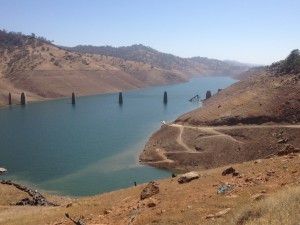California is in a drought – a very serious one. Over the past seven years, only one year has had above normal rain and snowfall totals. The past two years have seen extremely low snow pack, with this past year being considered the smallest snow pack on record.
With the continuation of this natural disaster, curtailments have continued. Last year, federal and state water projects received a “zero” allocation, while this year the state project upped its allocation to 20%. The federal project is still zero. Meanwhile, East-side districts – which are considered “water-right rich” are facing cuts as well. Fresno irrigation district is running for 4-6 weeks, Merced Irrigation District is delivering zero inches, Turlock Irrigation district is delivering 18″, while Modesto Irrigation District is delivering 22.” This is the first time in the history of Merced Irrigation District that zero inches of water were delivered – canals will not be filled for 2015.
Meanwhile, home-owners are faced with a 25% reduction. An average water use for a Californian is about 255 gallons. This means that roughly 50 gallons per person per day will need to be reduced. For residents within the Central Valley, this mostly means reducing their lawn watering. For residents in the Bay-area, the cuts will be harder since they use less water.
With all of the media, it is quite clear that the finger pointing has begun. City residents suggest Ag users over-consume water, while Ag is complaining that there isnt enough to maintain high levels of productivity. Who is right? Most likely neither, but over the next few months, I will try and highlight the pros/cons of irrigated agriculture to let you decide.
To start with, the air needs to be cleared on water allocations within California. According to California’s Department of Water Resources (DWR), in a “normal year,” water allocations are split 42%, 47%, 11% Agricultural, environmental, and urban usage, respectively. In wet years, a higher percentage of water is diverted to environmental uses, while in drought years, a larger percentage is applied to agriculture.
In media reports, the percentages are always skewed to prove a point of over/under use. For example – “agriculture uses roughly 80% of the developed water” — which is true, but the word “developed” excludes all water diverted for environmental uses (which, as highlighted above, is ~45% of the total). Proponents of agriculture often use the 42% figure. These are examples of how numbers can be reported out of context that give a mis-directed understanding on the subject. In future entries, I will use numbers that represent water use as reported by DWR.

Leave a Reply